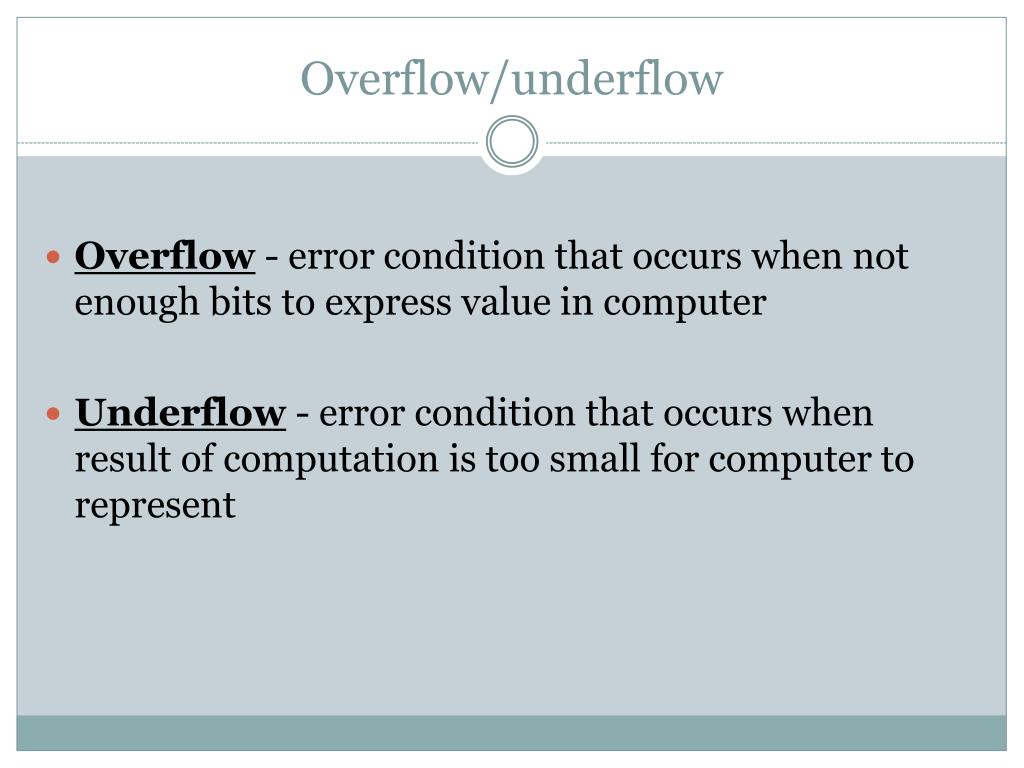

The exact way floating-point numbers are represented varies between computing platforms, although the same basic ideas apply in general. In a more likely example, the result of adding 20000+20000 results in an integer too large for 16-bit integers (with the result interpreted as -25536). The result of this calculation is 1101, which is interpreted as -3. For instance, with n=4 bits, the result of adding 6+7 is 13, which exceeds the maximum positive integer (7). Overflow occurs when an arithmetic calculation results in an integer too large for the word size. So that the negative numbers -8.-1 are represented as 8.15 (see below). The numbers -8.7 may be represented, by adding a bias term of 2 4=16 Used (a number too small to be likely, but useful for illustrative purposes) Is typically used so that a negative number k is represented by adding a "bias To accomplish this, "two's complement" representation These integers are used to represent negative numbers, so the effective range accumulated error resulting from repeated use of numbers stored inexactlyĪ digital computer can represent exactly integers in the range 0.2 n -1, where n is the number of bits used to represent an integer (typically 16.integer overflow resulting from a calculation with a result too largeįor the number of bits used to represent the mantissa of a floating-point.integer overflow resulting from a calculation with a result too large for.Such errors may be introduced in many ways, for instance: Certainįloating-point numbers cannot be represented exactly, regardless of the wordĮrrors due to rounding have long been the bane of analysts trying to solveĮquations and systems. Certain floating-point numbers may alsoīe represented exactly, depending on the representation scheme in use on theĬomputer in question and the word size used for floating-point numbers. Specifically, aĬomputer is able to represent exactly only integers in a certain range, depending The computer's inability to represent some numbers exactly. Mainly there as an example, use standard containers.Rounding (roundoff) error is a phenomenon of digital computing resulting from

Also generally this is only useful to people who already know about it and know its limitations well.

Note about alloca: As someone pointed out errors can be caused by placing arrays too large on the stack, so be careful. If you want dynamic arrays use new or you can use some C style alloca to still be standard compliant, but generally stl containers are your friend so you could also just use a std::vector>, like the problem does. One example on how it can be rewritten is: for(int a = -1 a = board.size() ||Īn other note I mentioned in the comment int mat is not standard C++. I recommend you clean up the bounds checking and neighbor counting so that it is not only more compact but much easier to look through as well.
Example of overflow error code#
I'm getting a runtime error while submitting the code on Leetcode.įor (row = board.begin() row != board.end() row++) then i = 0 & j = 0 is true, but mat is out of bounds, possibly filled with garbage which then gets dereferenced.


 0 kommentar(er)
0 kommentar(er)
